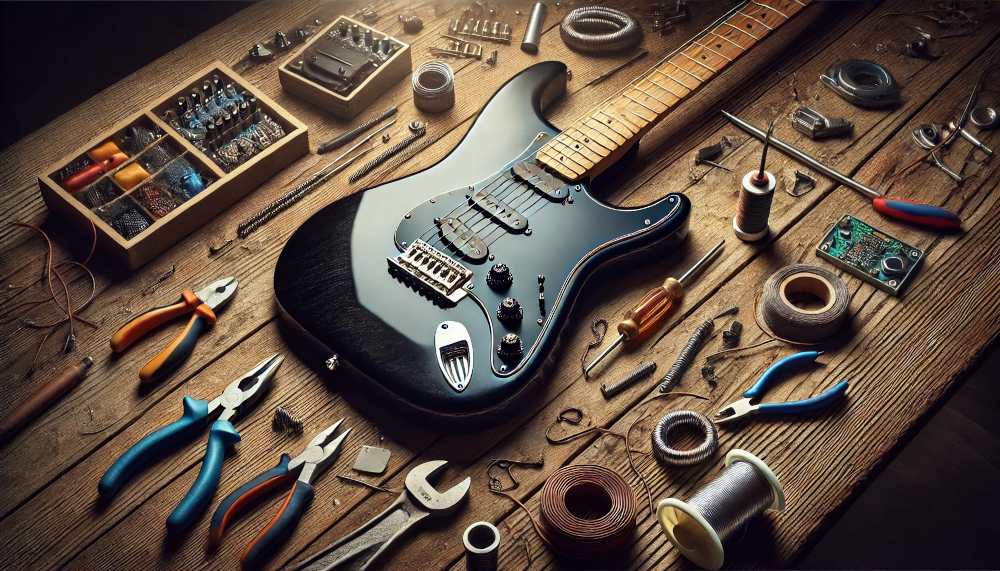
This is a question I see a lot on the Reddit r/guitar subreddit, “What is a guitar setup?”. It’s often followed up with, “Does my guitar need a setup?” or “How much does it cost?”.
A guitar setup is a process of adjusting a guitar to optimize its playability, tone, and overall performance. A proper setup ensures the instrument is comfortable to play and sounds its best. Here’s what’s typically included:
1. String Replacement
- Installing a fresh set of strings (if requested or needed).
- Selecting the appropriate string gauge based on the player’s preference and the guitar’s tuning.
2. Truss Rod Adjustment
Your guitar neck may bend inwards or backwards. The truss rod on your guitar allows you straighten the guitar neck and remove that inward or backward curvature.
- Checking the neck relief (curvature of the neck).
- Adjusting the truss rod to ensure the neck is neither too bowed nor too flat, which helps eliminate fret buzz and improves action.
3. Action Adjustment
- Setting the string height at the nut and bridge for optimal playability.
- Ensuring the action suits the player’s style (lower for fast playing, higher for aggressive strumming or slide playing).
4. Intonation Adjustment
- Fine-tuning the length of each string via the saddle to ensure the guitar plays in tune along the fretboard.
- Checking intonation with an accurate tuner.
5. Nut Adjustment
- Filing or shaping the nut slots to achieve the correct string height at the first fret.
- Ensuring smooth string movement for better tuning stability.
6. Bridge and Saddle Adjustment
- Adjusting the height and/or angle of the bridge or individual saddles.
- For electric guitars, tweaking tremolo/whammy bar systems (e.g., floating bridges like Floyd Rose).
7. Pickup Height Adjustment (Electric Guitars)
- Setting the pickups to the optimal height for balanced output and tone.
- Ensuring string-to-pickup distance enhances sustain and avoids interference.
8. Fretboard Cleaning and Maintenance
- Cleaning the fretboard to remove dirt and grime.
- Conditioning the fretboard (for wood types like rosewood or ebony) with oil to prevent drying out.
9. Fret Inspection
- Checking for uneven frets and potential buzzing issues.
- Optionally performing a fret dress, leveling, or polishing if necessary.
10. Tuning and Tuning Stability
- Ensuring the guitar holds its tuning well.
- Checking or replacing tuners if they are slipping.
- Lubricating the nut slots and bridge contact points (if needed).
11. Electronics Check (Electric Guitars)
- Testing all electronics, including volume and tone controls, switches, and output jack.
- Fixing crackling pots or loose connections.
12. Final Playability Check
- Playing the guitar to test overall feel, sound, and tuning stability.
- Making additional tweaks based on feedback or further inspection.
Many luthiers or guitar techs may customize the process depending on the type of guitar (electric, acoustic, bass), the player’s preferences, and specific needs of the instrument.
